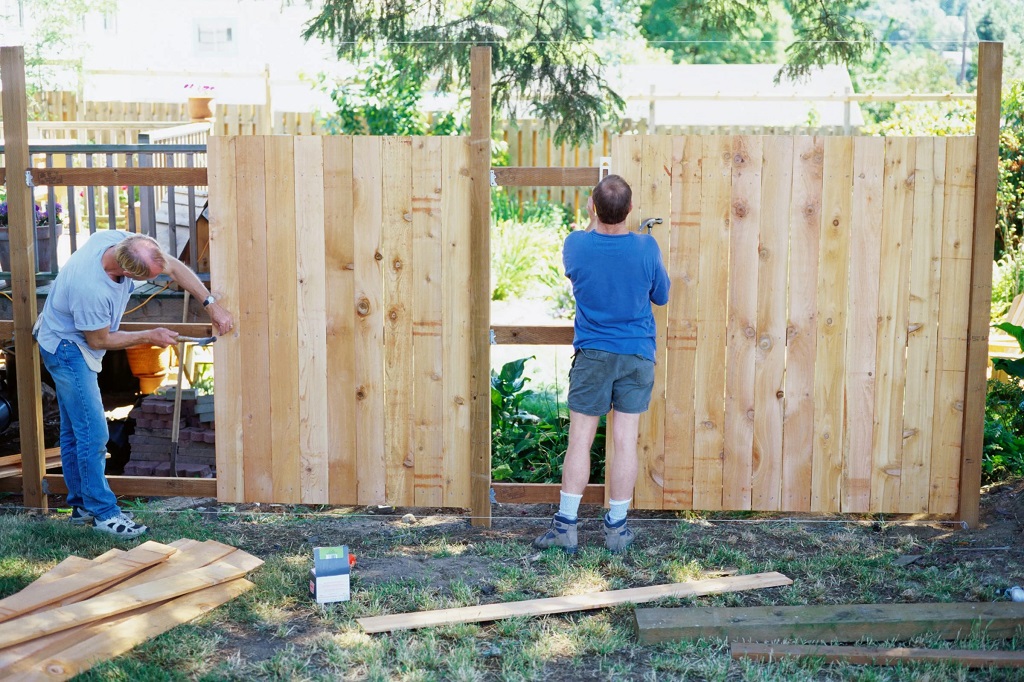Building A Living Fence: A Step-by-Step Tutorial

Table of Contents
Planning Your Living Fence
Before you even pick up a shovel, careful planning is crucial for a successful living fence. This involves choosing the right location, preparing the soil, and selecting the perfect plants for your needs.
Choosing the Right Location and Site Preparation
The success of your living fence hinges on proper site selection and preparation.
- Sunlight Exposure: Consider the amount of sunlight your chosen location receives. Full sun is ideal for many plants, but some thrive in partial shade. This impacts your plant selection significantly.
- Soil Assessment: Analyze your soil type. Is it clay, sandy, loamy? Well-draining soil is essential; amend heavy clay soils with organic matter like compost to improve drainage. A soil test can provide valuable insights.
- Soil Preparation: Tilling the soil to a depth of 12-18 inches is recommended. Remove any weeds, rocks, and debris. Incorporate a generous amount of compost or other organic matter to enrich the soil and improve its structure. This creates the perfect environment for healthy root growth.
- Fence Dimensions: Determine the desired height and width of your living fence. This will influence plant spacing and the overall quantity of plants needed.
- Aesthetic Considerations: Decide on the overall style of your living fence. Do you prefer a formal, neatly trimmed hedge, or a more informal, natural look?
Selecting the Perfect Plants for Your Living Fence
Choosing the right plants is paramount for a thriving living fence. Consider these factors:
- Fast-Growing Evergreens: For year-round privacy, opt for fast-growing evergreens like Leyland cypress, Arborvitae (Thuja), or holly. These provide dense screening throughout the year.
- Deciduous Shrubs: For seasonal interest and a less dense screen, consider deciduous shrubs such as Hawthorn, Privet, or Spirea. These offer beautiful blooms and changing foliage.
- Climate and Soil Suitability: Select plants that are well-suited to your specific climate and soil conditions. Consult your local nursery for recommendations.
- Disease and Pest Resistance: Choose disease-resistant and pest-resistant varieties to minimize maintenance and potential problems.
- Mature Size: Consider the mature size of your chosen plants to avoid overcrowding. Proper spacing is essential for healthy growth.
Planting Your Living Fence
With your plants selected and your site prepared, it's time to get planting!
Digging and Planting
Follow these steps for successful planting:
- Digging Holes: Dig individual planting holes slightly larger than the root ball of each plant. This allows for easy root expansion.
- Spacing: Space plants appropriately, considering their mature size. Consult plant tags or your nursery for recommended spacing.
- Planting: Gently remove plants from their containers, taking care not to damage the roots. Plant at the same depth as they were growing in their containers.
- Backfilling: Backfill the holes with soil, firming gently to eliminate air pockets. Avoid compacting the soil too tightly.
- Watering: Water thoroughly after planting to help the roots settle.
Creating a Strong Foundation (Optional)
For taller plants or in areas with strong winds, a temporary support structure can significantly aid establishment:
- Support Structures: Use stakes and twine or wire mesh to create a support system for your young plants. This helps them stand upright and resist wind damage.
- Temporary Support: This support is typically removed after a year or two, once the plants have become well-established.
Maintaining Your Living Fence
Maintaining your living fence is key to its long-term health and beauty.
Watering and Fertilizing
Consistent watering and fertilization promote robust growth:
- Watering: Water regularly, especially during dry spells, until the plants are well-established. Deep watering is more effective than frequent shallow watering.
- Fertilizing: Fertilize annually in spring with a balanced fertilizer formulated for shrubs. Follow package instructions carefully.
- Mulching: Apply a layer of mulch around the base of the plants to retain moisture, suppress weeds, and regulate soil temperature.
Pruning and Shaping
Regular pruning is essential for maintaining the shape and size of your living fence:
- Pruning Techniques: Learn the appropriate pruning techniques for your chosen plant type. Incorrect pruning can damage the plants.
- Regular Pruning: Prune regularly to maintain the desired shape and size. This encourages dense growth and prevents legginess.
- Deadwood Removal: Remove dead or diseased branches as needed to promote healthy growth.
- Professional Help: For complex pruning or shaping, consider seeking help from a professional arborist.
Troubleshooting Common Issues
Even with careful planning and maintenance, issues can arise.
Pest and Disease Control
Be vigilant in monitoring for pests and diseases:
- Early Detection: Identify and address any pest or disease problems promptly. Early intervention is crucial.
- Organic Methods: Use organic pest control methods whenever possible, reducing the environmental impact.
- Expert Advice: Consult with a local nursery or garden center for advice on specific pest or disease problems.
Dealing with Gaps and Thin Spots
Over time, gaps or thin spots may develop in your living fence:
- Filling Gaps: Plant additional seedlings or cuttings in gaps to fill in sparse areas.
- Support New Plants: Provide extra care to help newly planted seedlings establish themselves.
Conclusion
Building a living fence is a rewarding project that provides environmental benefits alongside a beautiful and natural boundary. By carefully planning, selecting appropriate plants, and providing consistent maintenance, you can create a thriving living fence that enhances your property for years to come. Start planning your own stunning and sustainable living fence today! Learn more about different living fence plant options and advanced maintenance techniques through further research. Remember, a well-maintained living fence—a green fence, a natural fence, a hedge fence—is a testament to your dedication and a gorgeous addition to your landscape.

Featured Posts
-
 Live Music Consolidation The Wall Street Journal On Live Nations Influence
May 29, 2025
Live Music Consolidation The Wall Street Journal On Live Nations Influence
May 29, 2025 -
 Brann I Fire Bater I Oslo Nyhetsvarsel Og Oppdateringer
May 29, 2025
Brann I Fire Bater I Oslo Nyhetsvarsel Og Oppdateringer
May 29, 2025 -
 Moss 17 Mai Program Aktiviteter Og Overraskelser
May 29, 2025
Moss 17 Mai Program Aktiviteter Og Overraskelser
May 29, 2025 -
 Understanding Business Growth Mapping The Countrys Hot Spots
May 29, 2025
Understanding Business Growth Mapping The Countrys Hot Spots
May 29, 2025 -
 Man Uniteds Interest In Liverpool Target Confirmed Transfer Update
May 29, 2025
Man Uniteds Interest In Liverpool Target Confirmed Transfer Update
May 29, 2025
